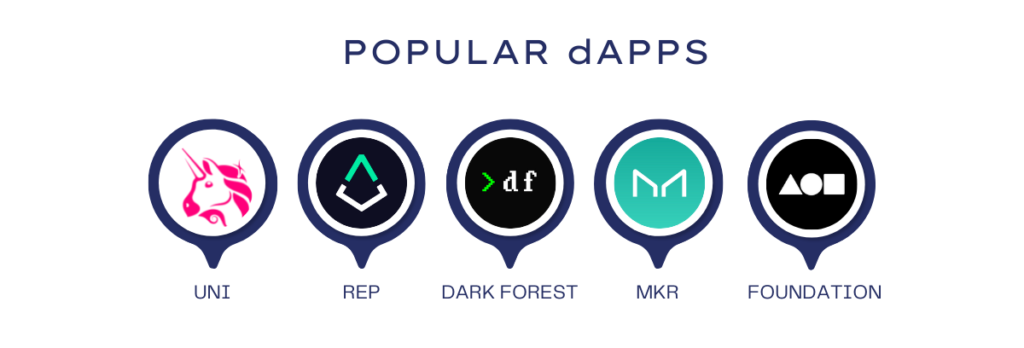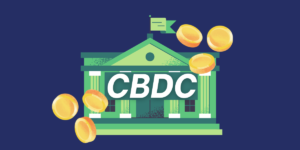Ethereum is a blockchain platform that launched in July 2015, with Vitalik Buterin originating the idea in 2013. Ethereum is a decentralised computing network built on blockchain technology.
Ether (ETH) is a cryptocurrency belonging to the Ethereum blockchain. ETH is currently the second-largest cryptocurrency in market value.
Ethereum also uses a proof-of-work consensus mechanism to verify transactions on the blockchain. However, it is in the process of transitioning to proof-of-stake as part of Ethereum 2.0.
Find out more about proof-of-work vs proof-of-state here.
Understanding Ethereum
Ethereum was created to be more than just a digital currency. It is often described as the world’s programmable blockchain. This provides a platform for decentralised applications (dApps) to cover finance, arts/collectibles (NFTs), gaming and technology.
On Ethereum’s blockchain, developers deploy smart contracts to run. As a collection of code, written with Solidity/ Vyper, smart contracts run as a program.
Unlike conventional contracts, where it is typical to involve a lawyer, smart contracts don’t require a third party.
The two parties who come to an agreement about the delivery of goods or services code a contract on the Ethereum blockchain. Once the conditions of the agreement are met, the contract self-executes and delivers the Ether to the appropriate party.
Not only do we trade ETH as a digital currency on exchanges, but it is also used as gas to build, run and interact with applications on the platform. Ethereum miners are paid gas fees, through the computational power used to process smart contracts and transactions. These prices fluctuate according to supply/demand across the network.
Tokens are value counters stored within these smart contracts and are bought, sold and traded on the network. To allow the different applications and their tokens to easily interact with each other, interface standards like ERC-20 were created (like APIs for regular computer programs).
This allows a wallet, such as Metamask, to use one standard to communicate with thousands of different tokens.
Understanding ERC-20
ERC-20 is a standard for fungible tokens, meaning that each token has the same type and value as another token (in the same way that one dollar is equal to one dollar).
Tokens can be used for a variety of things, such as crowdfunding (ICOs), decentralised finance/exchanges, decentralised autonomous organisations (DAOs), gaming, voting and even to represent physical objects.
Instead of running on its own blockchain, ERC-20 tokens are issued on the Ethereum network.
ERC-20 Standard List of Rules
ERC-20 tokens define a list of rules that all other Ethereum tokens must follow. For example, these tokens formulate how tokens are transferred, how transactions are approved, how users access data about a token and the overall total supply of tokens in the market.
This compliance among tokens ensures compatibility between the wide variety of tokens being issued on the Ethereum platform.
A variety of cryptocurrencies use the ERC-20 standard, such as Tether (USDT), Chainlink (LINK), Binance coin (BNB), USD coin (USDC), and Dai, to name a few.
Some examples of popular dApps running on the Ethereum network include UniSwap (decentralised exchange), Augur (betting/prediction marketplace), Dark Forest (gaming), Foundation (NFT marketplace) and MakerDAO (lending/borrowing).

Advantages of Ethereum Network
- Large network: Ethereum allows for a robust ecosystem to develop as a platform for other products and services.
- Wide variety of functions: Ethereum’s complex contracts allow the network to be the whole package, unlike other blockchains.
- True decentralisation: Ethereum is a decentralised and transparent network.
Disadvantages of Ethereum Network
- Fees: With Ethereum comes high transaction fees. These fees are pushing some developers away from the network.
- ETH is not capped: ETH lacks scarcity as it is not capped. Unlike Bitcoin’s cap of 21 million coins, an unlimited number of ETH can exist.
While there are various advantages and disadvantages to the Ethereum network, the reward often outweighs the risk. As the second-largest cryptocurrency in market value, Ethereum continues to pave the way.





